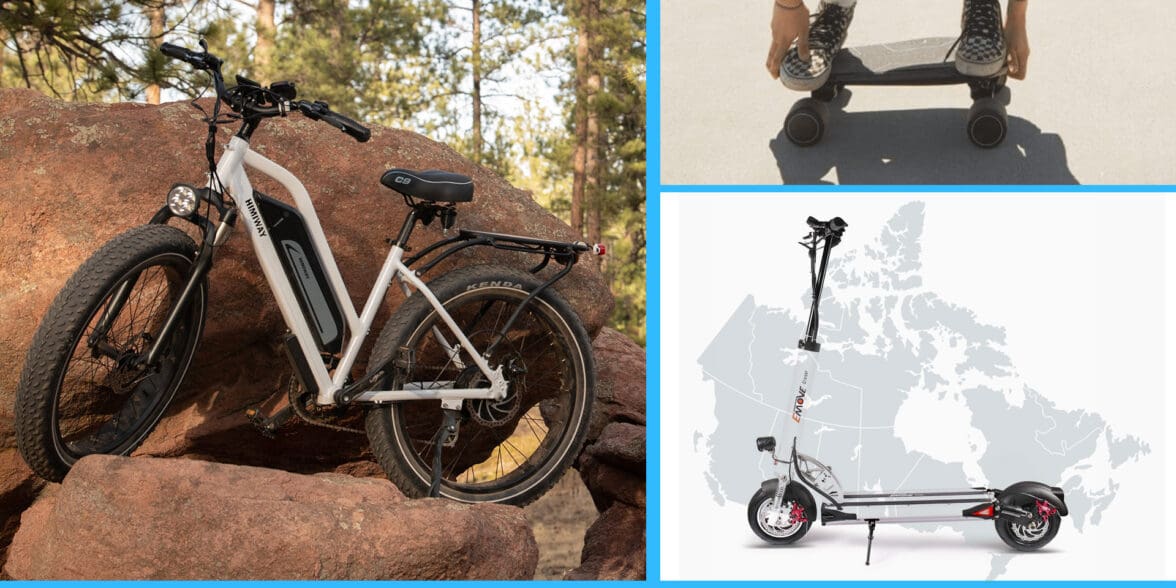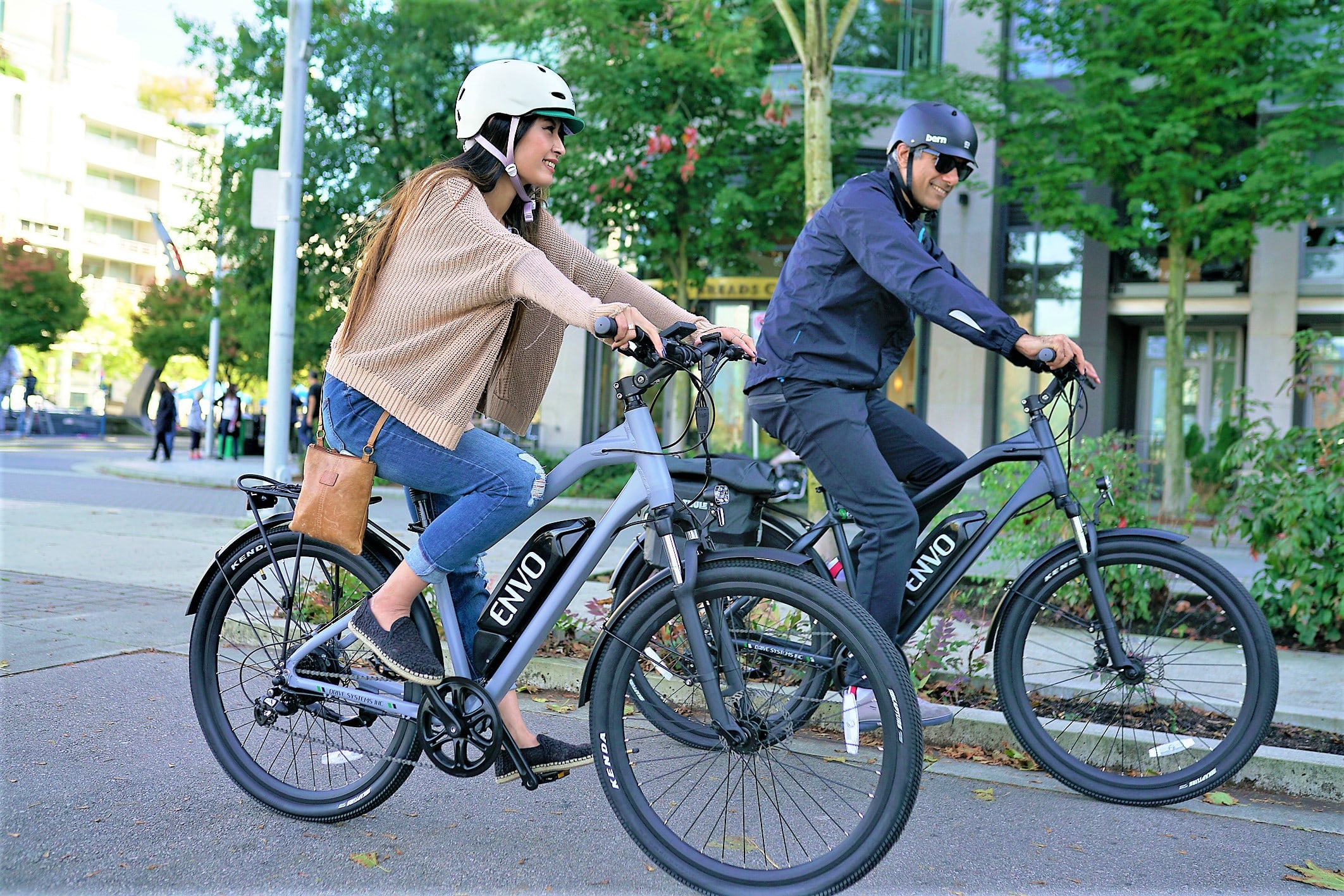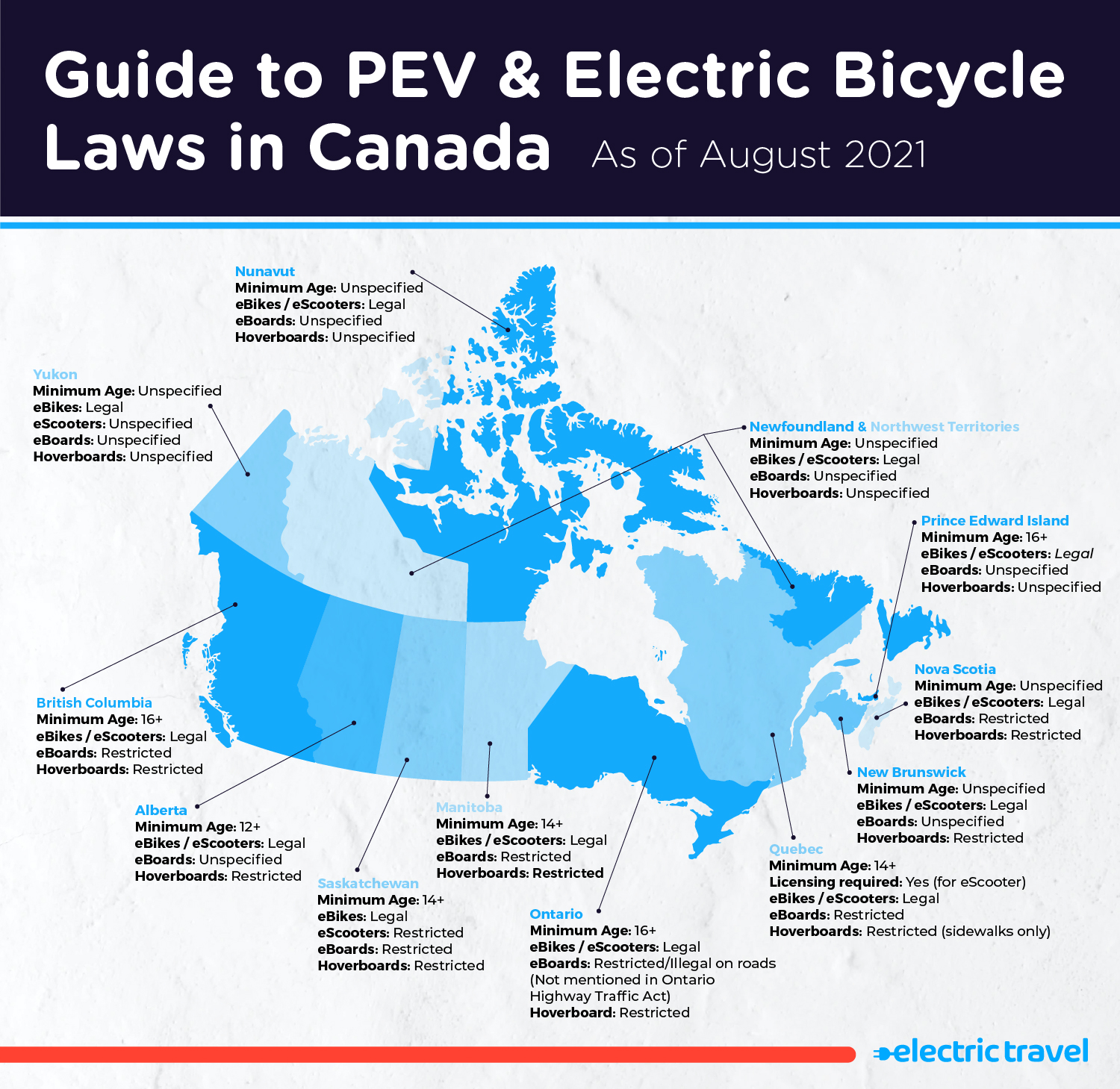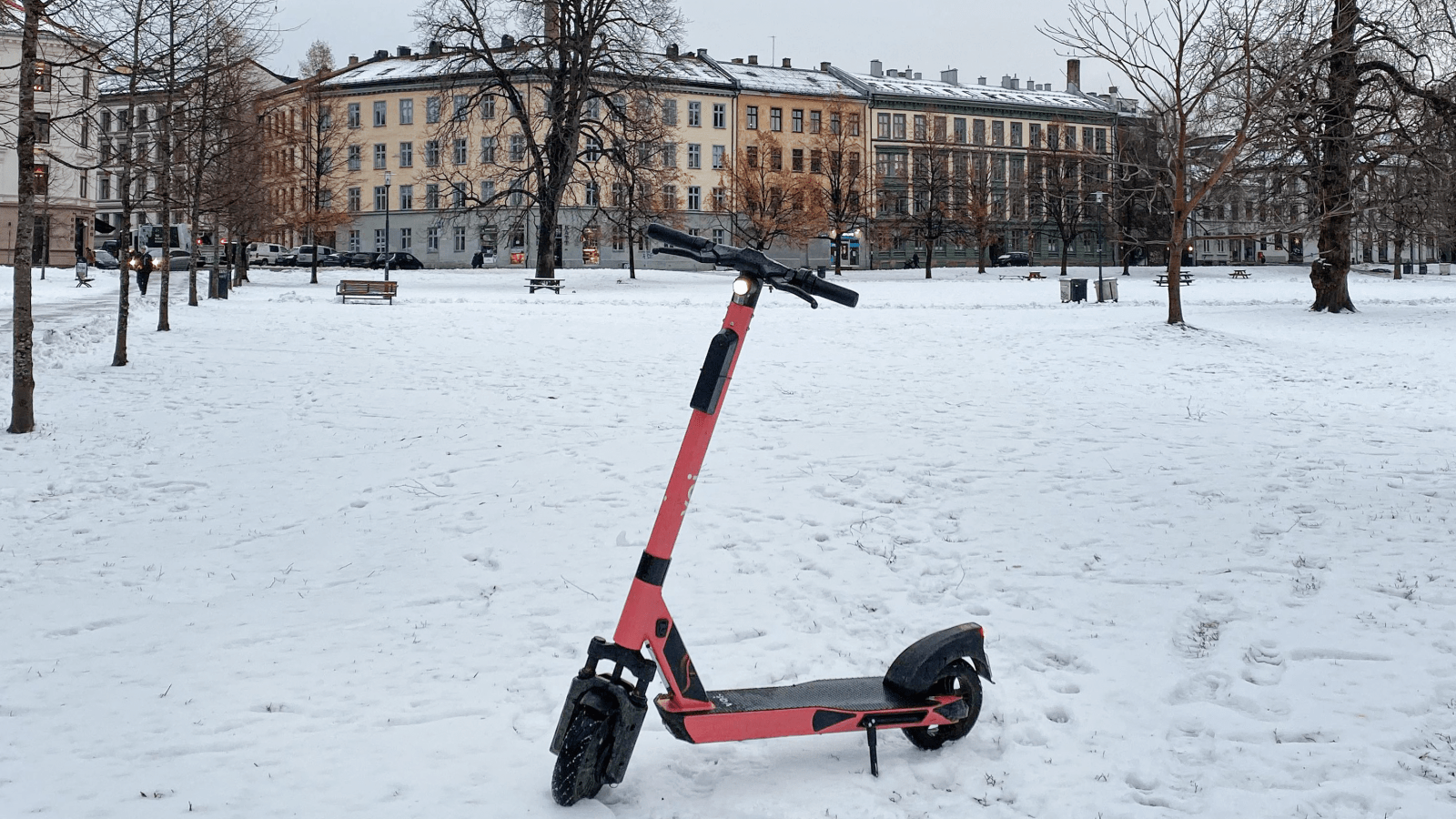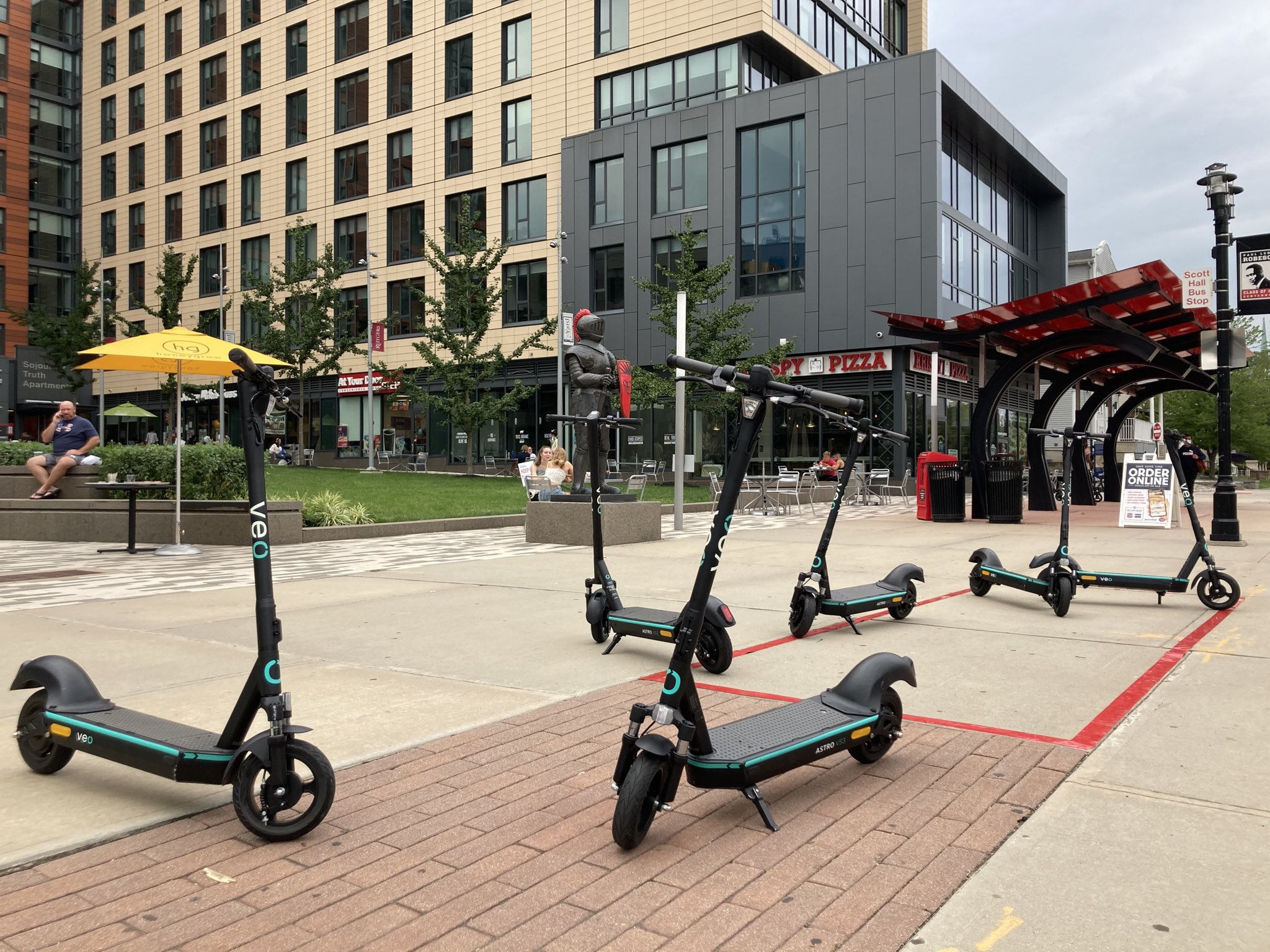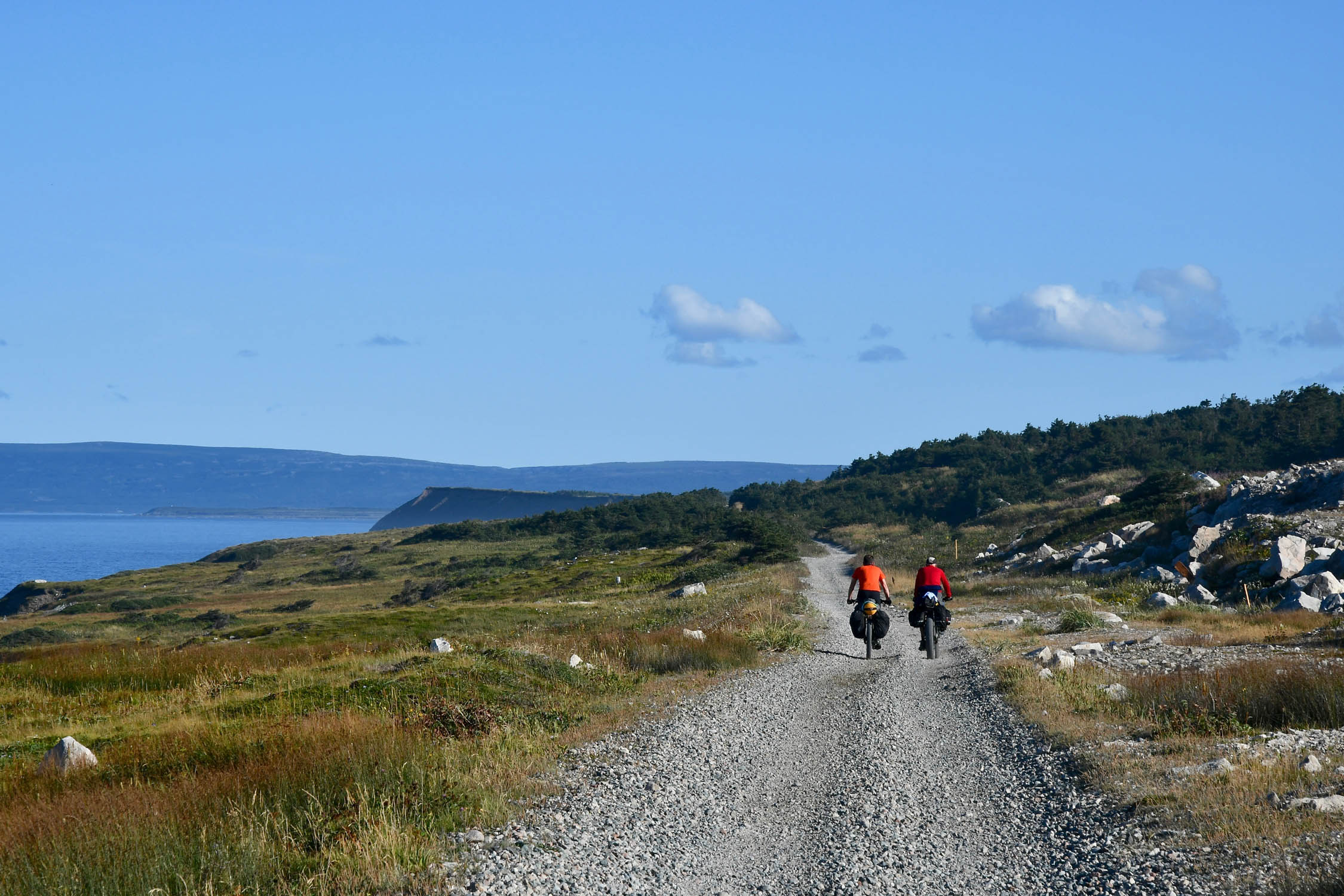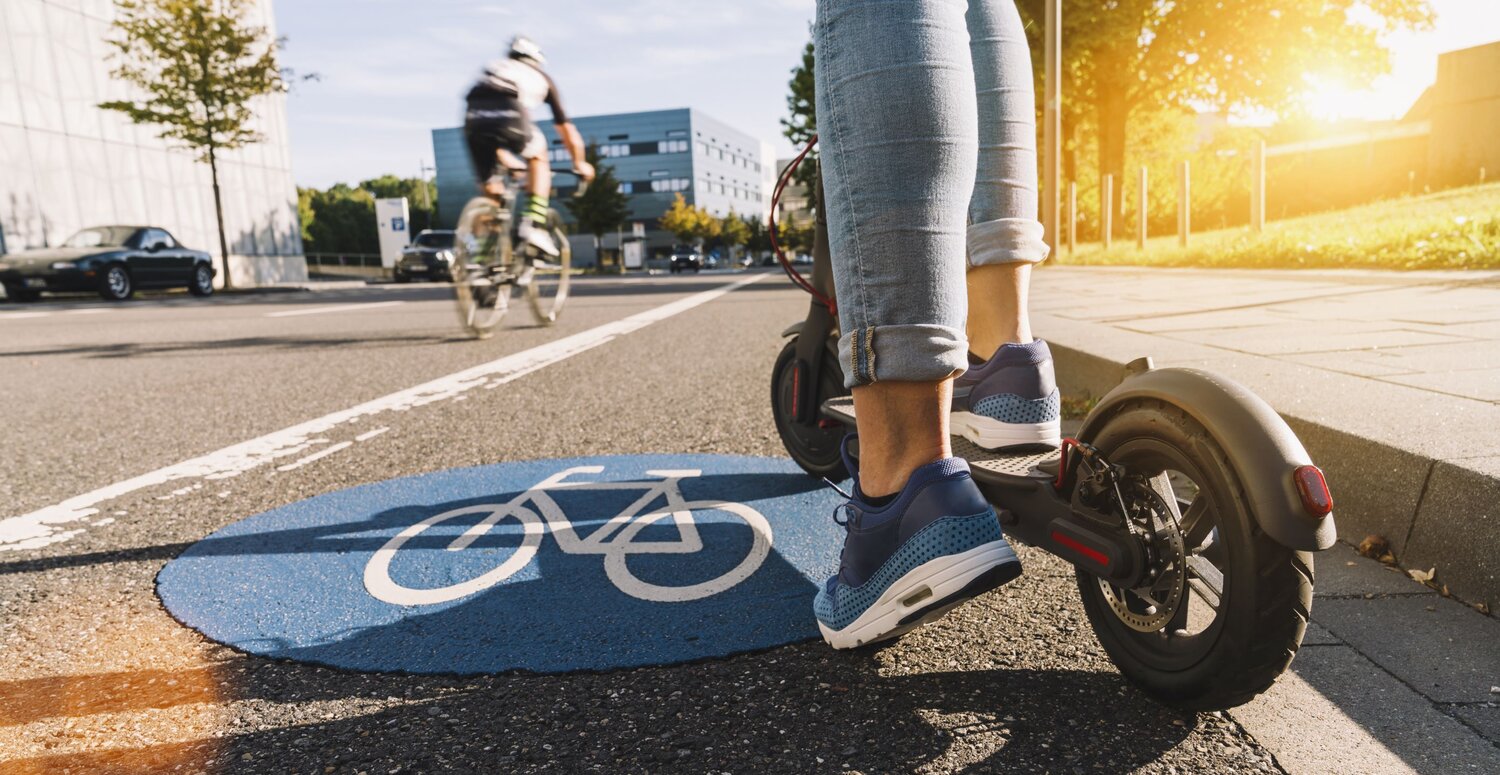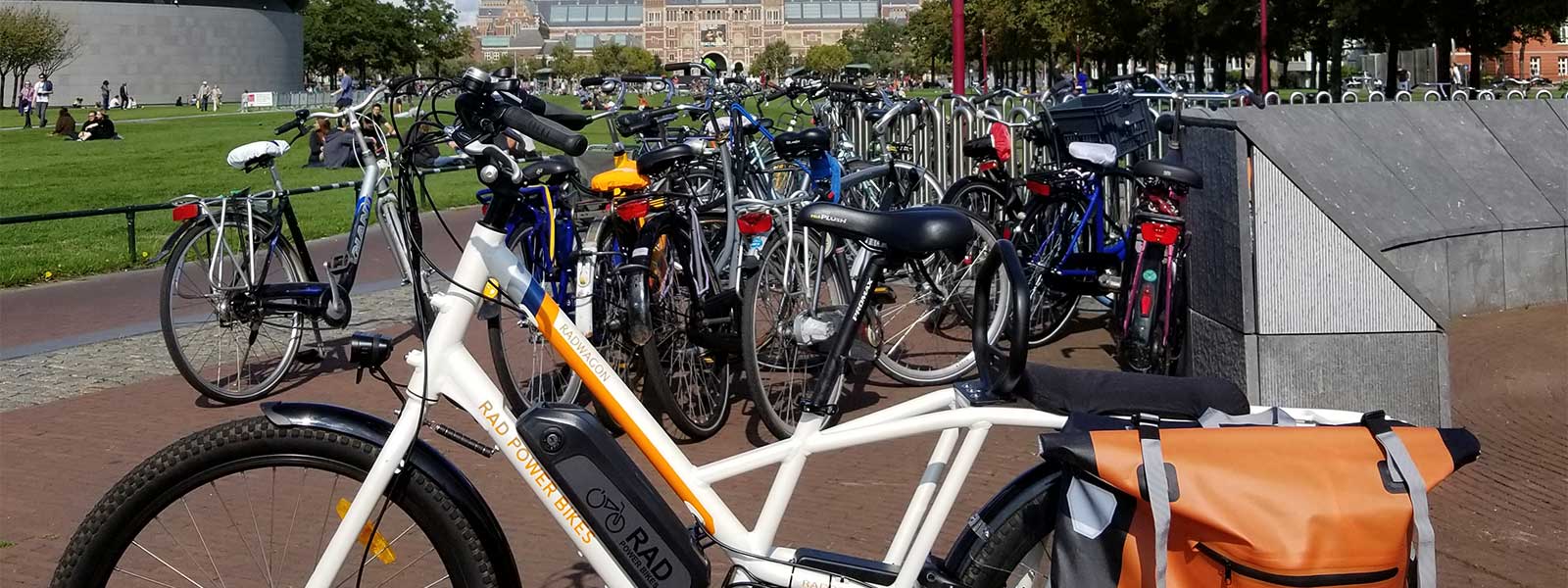With the PEV revolution underway, many countries have yet to take a uniform approach to regulate such vehicles. This can prove confusing to tourists, new riders, and even locals, with each province upholding various laws and requirements to ride. For example, a 12-year-old from Alberta can legally ride through their province into neighbouring Saskatchewan, where riders under 14 are breaking provincial law.
Therefore, we recommend reading through and learning the rules and regulations for each region. In this guide, we aim to cover all of the PEV and eBike laws in Canada, for all ten provinces. Hopefully, this will help clarify the do’s and dont’s of riding through this charming country. So without delay, let’s begin with an overview.
The Rise of PEVs in Canada
Despite seeing widespread adoption amongst Americans, Europe and Asia, the PEV market in Canada is slowly taking root. Clearly a growing market, we’ve seen an increase in eBike usage, amongst other electric vehicles. As a result of this relatively recent surge of popularity, federal and provincial governments alike are finally starting to regulate these vehicles.
Unsurprisingly, the popularity of plug-in electric vehicles has also soared, totalling approx. 141,000 units at the end of 2019 (78,680 electric cars, 62,380 hybrids). In Ontario, the government set purchase incentives for new plug-in electric vehicles, including a rebate between CA$5,000 (4 kWh battery) to $8,500 (17 kWh or more). As such, it’s pretty clear that Canada actively encourages their citizens to ride electric, but what are their rules surrounding small motored personal PEVs?
As it stands, regulations surrounding eScooters, eBikes, etc. are very similar to traditional bicycle laws, requiring no license plates or even insurance to operate.
For comparison, eBikes and other PEV motors are limited to 500W in Canada, whereas those in the U.S. remain capped at a slightly higher 750W. Despite this, any difference in performance remains minimal, with both motor sizes capable of reaching nearly the same speeds. In fact, these 500W eBikes use less battery charge to power the motor, resulting in an improved mileage over their 750W counterparts.
Key Differences between U.S. and C.A. Law
However, limiting motor size is amongst the few similarities U.S. and Canadian law share. For example, in Canada riders must wear helmets across all provinces and territories, unlike the U.S. This is the case for every province unless mentioned otherwise.
As previously stated, age restrictions vary depending on province; with some setting minimum ages as low as 12, whilst others require an age of at least 16 years old. For those in the States, we recommend reading our guide to PEV/eBike laws in the U.S. for more information.
Furthermore, some provinces require licensing on any eBike with a throttle, alongside specific labelling for all models within the country. Each province may set its own regulations surrounding PEVs, yet still must adhere to the 500W motor limit. So with nationwide federal regulation out of the way, let’s start covering the differences between each region, beginning with Alberta. Unless stated otherwise, all provinces listed operate in accordance with federal regulation.
Currently, the federally regulated speed limit for eBikes is 32 km/h. This is also generally accepted as the speed limit for electric scooters. However, some municipalities like Ontario limit them to 24 km/h. Please note, these provinces are listed in alphabetical order. These laws do not cover electric skateboards, as they remain in a “grey area” regarding regulation. For example, e-boards and other low-powered PEVs are currently illegal to ride on roads of B.C.
Provincial PEV Laws in Canada
Alberta PEV Laws
Although no licensing, registration, or insurance is required to operate a PEV, riders must be at least 12 years old. Alongside this, riders under 16 years old cannot carry any passengers. Whilst eScooters and eBikes are treated the same, hoverboards remain illegal from sidewalks and other public use.
- eBikes / eScooters: Legal (12+)
- eBoards: Unspecified
- Hoverboards: Restricted
British Columbia PEV Laws
For eBikes and other conventional PEVs, riders must be aged 16 years and over. However, no licensing, registration or insurance is required, with riders only needing to follow bicycle safety laws. An exception to this relaxed regulation could come soon in the following months. Six British Columbia municipalities plan to further regulate electric scooters. Regarding hoverboards, such models remain illegal for use on public roads, much like Alberta.
- eBikes / eScooters: Legal (16+)
- eBoards: Restricted
- Hoverboards: Restricted
Vancouver, Kelowna, Vernon, West/North Vancouver city will enact bypass laws on residential streets with speed limits of 50 km/h or less. These laws will restrict electric scooter models that exceed speeds of 24 km/h, effectively banning them from the roads. These remain fairly recent developments, so we expect to see these laws take place in the following months at a minimum.
B.C. legislation also requires PEVs to possess a mechanism that:
- Turns the motor on/off
- Prevents the motor from engaging before a set speed of 3 km/h.
- Disengages the motor when riders start braking, release the accelerator or stop pedalling.
Manitoba PEV Laws
Riders within Manitoba must be aged 14 years or over; with those on eBikes/eScooters required to cycle in single-file fashion, excluding overtaking or turning. If PEV engine power exceeds 50cc or 50 km/h, riders must apply for a motorcycle license or permit. Lastly, provincial legislation prohibits sidewalk use of a bicycle with a rear-wheel diameter exceeding 40mm.
- eBikes / eScooters: Legal (14+)
- eBoards: Restricted
- Hoverboards: Restricted
Interestingly enough, hoverboards are in the same category as Segway’s and thus, classified as motor vehicles. However, they cannot be registered or insured, with access to roads and sidewalks also highly limited.
New Brunswick PEV Laws
The laws for this region remain aligned with federal law, with a few notable exceptions. For starters, PEVs and eBikes may freely use sidewalks throughout this province, unlike many other areas. There is also no statement regarding a minimum age limit for eBike riders, possibly resulting in some confusion. We recommend reaching out to your local governing body or law enforcement to clarify these legalities.
- eBikes / eScooters: Legal
- eBoards: Unspecified
- Hoverboards: Restricted
The New Brunswick Highway Traffic Act requires riders to use a headlight for visibility when operating in the dark. eBikes must also utilise forward-facing lighting and rear-facing red reflectors. Please note, eScooters have access to any roadway that bicycles do. However, riders must not use the sidewalk, or risk a $250 first offence fine; followed by a subsequent $500 fine for repeated offenders.
Newfoundland & Northwest Territories PEV Laws
These regions almost fully align with federal regulation, excluding the helmet requirement for eBikes. Much like New Brunswick, these regions do not specify any age limits for riders. In fact, they don’t even specify the legalities surrounding hoverboards or electric skateboards. Again, we recommend contacting law enforcement or your local governing body to confirm these queries beforehand.
- eBikes / eScooters: Legal
- eBoards: Unspecified
- Hoverboards: Unspecified
Nunavut PEV Laws
We were unable to find any information regarding a legal age limit for riders in Nunavut. There is only one other deviation from federal regulation, with riders not required to wear a helmet when cycling. Other than this, Nunavut stays in line with federal law. Due to the extreme weather and natural surroundings of this province, it’s unlikely to find much of a PEV presence here.
- eBikes / eScooters: Legal
- eBoards: Unspecified
- Hoverboards: Unspecified
Nova Scotia PEV Laws
Again, this region’s regulation makes no specification of any age limit, much like the previous two provinces. Please contact your local governing body or local law enforcement if this proves a problem. eBike cyclists in Nova Scotia must ride single file on all highways, excluding overtaking other cyclists, much like Manitoba. Cyclists have access to all roads unless expressly stated otherwise with a “no bikes or slow-moving vehicles” sign.
- eBikes / eScooters: Legal
- eBoards: Restricted
- Hoverboards: Restricted
Recently, the local government amended the NS Motor Vehicle Act to allow the use of Segways on roads, bike lanes, and even sidewalks. However, other motorised hoverboard models were not included and thus, remain illegal for use on roads, sideways and bike lanes. Legislation surrounding electric skateboards remains unclear and inconvenient, with use of roads prohibited.
Ontario PEV Laws
Although no driver’s license, permit, or license plate is required to operate an eBike or eScooter, the rider age requirement stands at 16 years of age. Whilst eBikes stick to the federal speed limit of 32 km/h, eScooter models cannot exceed more than 24 km/h. Alongside this, they must adhere to the same rules as a standard cyclist, including the use of bike lanes. However, there are a couple of situational rules in which such PEVs are banned on highways and other roads:
- Any roads/sidewalks where bicycles are banned (municipal/local law).
- Any city roads, sidewalks, bike lands, or trails where PEVs and eBikes are explicitly forbidden.
This varies depending on PEV model, with hoverboards remaining illegal to ride on a public road; mostly due to not meeting required safety standards for on-road use. Some municipalities such as Toronto have enacted by-laws to make it illegal to use these models illegal, even for use on the sidewalk.
- eBikes / eScooters: Legal (16+)
- eBoards: Restricted/Illegal on roads (Not mentioned in Ontario Highway Traffic Act)
- Hoverboard: Restricted
Prince Edward Island PEV Laws
PEV laws are a little different for this region, with eBikes classified as a “Motor Assisted Pedal Bicycle”; subsequently restricted to a maximum output of 50cc. Despite this power limitation, the top speed of these vehicles also cannot exceed 32 km/h; as dictated by federal law. Riders must be aged at least 16 to legally ride, although no licensing or insurance is required. Other than this, all other rules and regulations remain the same.
- eBikes / eScooters: Legal (16+)
- eBoards: Unspecified
- Hoverboards: Unspecified
Quebec PEV Laws
Riders between 14-17 years of age must possess a class “6D” license, the same licensing required for an electric scooter or moped. However, those over 18 years old do not require this license, alongside any registration or insurance for such PEVs.
- eBikes / eScooters: Legal, licensing required (14+)
- eBoards: Restricted
- Hoverboards: Restricted (sidewalks only)
Currently, eBikes remain legal for use on all public roadways in Quebec (excluding highways); with riders expected to abide by the highway safety code. For hoverboards, roadside use is still banned. However, Quebec is surprisingly one of few provinces to allow riders to use them freely on sidewalks.
Saskatchewan PEV Laws
Riders must adhere to the Traffic Safety Act as if operating a normal vehicle. However, pedal-assisted eBikes remain prohibited in certain municipalities, where their use is restricted. The minimum age requirement for an eBike rider in this region is 14 and over. Any gas-powered models or those with motors larger than 500W without pedals are classified as motorcycles, requiring the correct licensing.
- eBikes: Legal (14+)
- eScooters: Restricted
- eBoards: Restricted
- Hoverboards: Restricted
The use of electric scooters and skateboards on public property remains illegal, with their use legal on private property only. This is one of the very few provinces that do not treat eBikes/eScooters similarly. Many citizens have called for legislative amendment, so we hope to see this change soon.
Yukon PEV Laws
Currently, there is no specified age limit for the operation of a PEV. Alongside this, helmet use is not legally required by provincial law, with riders also able to use eBikes on the sidewalk; provided the motor is not engaged. As it stands, Yukon’s provincial government has not specified any restrictions or legislation regarding electric scooters, eBoards, or even hoverboards.
- eBikes: Legal
- eScooters: Unspecified
- eBoards: Unspecified
- Hoverboards: Unspecified
Conclusion
Despite most provinces remaining federally regulated, we can clearly see a number of outliers and differences between these regions. Some provinces such as Nunavut simply aren’t practical locations to operate a PEV, which makes their seemingly sparse PEV laws make sense. We anticipate these provincial laws and regulations becoming much more uniform in the future.
We hope that our guide to PEV & electric bicycle laws in Canada has answered any and all of your questions. Spotted something that’s not right or have a suggestion? Leave us a comment and share your thoughts, we’d love to hear from you!
Frequently Asked Questions
Do I need a license to ride legally?
Currently, the majority of provinces do not require licensing or insurance. As it stands, Quebec and Manitoba are the only provinces to require licensing, should engine power exceed 50cc.
Can I ride on the sidewalk?
The vast majority of provinces and multiplicities restrict the use of PEVs on the sidewalk. New Brunswick and Yukon are one of the few exceptions to this rule, allowing eBikes and other PEVs to freely use the sidewalk. Interestingly, Quebec restricts hoverboards to sidewalk use only.
How fast can I ride through cities?
Typically, PEV power in Canada remains limited to a maximum output of 500W and a top speed of 32 km/h. However, some cities like Ontario have limited them to 24 km/h within the city. We recommend checking the local speed limits for each city you plan to visit or ride through beforehand.
What is the average minimum legal age for riders?
Federal regulation dictates a minimum rider age of at least 12+ years old, however many provinces share the same age requirement of 14. There are a few notable exceptions (such as British Columbia) where this age is increased to 16 years old, although the average remains at 14.
Can I be fined for riding incorrectly?
Yes – in New Brunswick, eScooter riders can find themselves facing a $250 to $500 fine for riding on the sidewalk. In Ontario, eBikes remain prohibited in recreational parks, resulting in a possible fine for riders.
Furthermore, those riding under the influence or intoxicated may also find themselves subject to a fine and even jail time. These regulations vary depending on province or multiplicity, so please double-check the local laws for each region.
Sources and Additional Reading
- https://www.radpowerbikes.com/blogs/the-scenic-route/ebike-laws-around-the-world
- https://en.wikipedia.org/wiki/Plug-in_electric_vehicles_in_Canada
- https://www.statcan.gc.ca/eng/reference/province
- https://scooteretti.com/blogs/laws-regulations/electric-bike-electric-scooter-laws-regulations-in-canada


